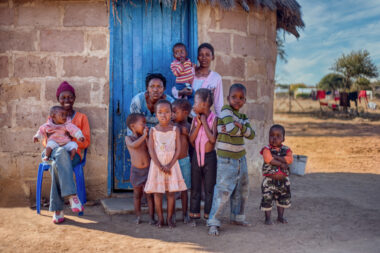
Australia’s milk production continues to recover, as global supply is forecast to grow at a modest rate in the coming year, Rabobank says in its newly-released Global Dairy Quarterly.
In the Q3 report, titled Market Narratives are Shifting, the global agribusiness bank says positive – though modest – milk supply growth is expected from the world’s major dairy-exporting regions through the remainder of 2024 and in 2025.
Meanwhile, milk production in Australia in the 2023/24 season – which ended in June – was 3.1 per cent higher on the previous year at 8.4 billion litres (an increase of 249 million litres). However, the bank is expecting Australian production to grow at a lower rate in the 2024/25 season – currently forecast at 1.5 per cent.
RaboResearch senior dairy analyst Michael Harvey says Australian milk supply growth has been widespread, with production expanding in all states and regions, with the exception of western Victoria (where dry conditions have constrained production).
New South Wales had “led the charge”, recording impressive growth of 5.3 per cent in milk production for the 2023/24 season.
“Seasonal conditions remain mixed though across the key dairying regions,” Mr Harvey said. “There have been severe rainfall deficiencies so far in 2024 for western Victoria and South Australia, which are sizeable milk production regions. However seasonal conditions elsewhere have been mostly favourable.”
Global market balance
The global dairy market remains “balanced, but sensitive to change”, the report says.
And the next year could see significant shifts as production increases and markets adjust.
Milk production from the main global export regions had been elusive over recent years, Mr Harvey said.
“Since the second half of 2021, combined milk production from the Big-7 dairy export regions – the EU, US, New Zealand, Australia, Brazil, Argentina and Uruguay – has only grown in three quarters,” he said.
However, high dairy prices in the first half of 2024, plus lower feed costs, have improved farmer margins, encouraging production.
RaboResearch expects milk supply from the major exporting regions to increase a modest 0.14 per cent in 2024 on the previous year.
“With producers seeing improved margins though, milk supply could make a distinct shift upward in 2025,” Mr Harvey said. “Our initial forecasts for 2025 suggest a 0.65 per cent year-on-year production lift from the Big 7, bringing global milk supply from these regions above the five-year average.”
Mixed demand
Demand for dairy remains mixed across regions, the report says,
“At a retail level, price deflation continues to occur within supermarket aisles in South America, the United States and in most of the EU,” Mr Harvey said. “In response to weak consumer spending in food service channels, companies are spending more on promotions and advertising as consumers ‘pinch pennies’.”
Both demand for and production of milk are expected to decline in China, the world’s largest dairy importer.
Mr Harvey said RaboResearch had revised down its estimates for Chinese dairy consumption for 2024.
“As the market continues to recalibrate, we anticipate China’s net imports will be 12 per cent lower in 2024 compared with 2023 levels. Skim milk powder import volumes, in particular, could drop by up to 30 per cent.”
China’s own domestic milk production is forecast to decline by 0.5 per cent year on year in 2025, as economic pressure on farms mount in the face of tumbling Chinese farmgate milk prices.
Australia
There have been no major changes to Australian farmgate milk prices since the new season announcements were made, the Rabobank report says.
“Across the southern export regions, milk prices for those not under contract have fallen more than 10 per cent compared with the previous season,” Mr Harvey said. “In contrast, milk prices in regions producing drinking milk for the domestic market are mostly unchanged.”
As a result of the easing farmgate milk prices, dairy farmers in affected regions are bracing for a margin squeeze, the report said, with softer cull cow prices and a drop in heifer export volumes adding to the margin pressure for some.
In terms of dairy producers’ costs, Mr Harvey said, there is a mixed outlook. “Grain prices have drifted lower, which is welcome news for dairy farmers, and the outlook for prices for the current Australian winter crop is mostly favourable for purchasers. But in stark contrast, fodder (hay) prices have jumped, driven by supply concerns,” he said.
Retail price inflation for dairy products in Australian supermarket aisles has also continued to decelerate, Mr Harvey said, with the latest (June) quarterly Consumer Price Index showing yearly inflation for milk and cheese tracking at less than three per cent. This was the lowest rate of dairy product inflation since 2021, Mr Harvey said.
Australian dairy exports finished the 2023/24 season on a high note, the report says, helped by increased milk availability and led by strong growth in cheese, skim milk powder and whey.
<ends>
Please refer to our RaboResearch disclaimer: Disclaimer (rabobank.com.au)
Media contacts:
Denise Shaw Will Banks
Media Relations Media Relations
Rabobank Australia & New Zealand Rabobank Australia
Phone: 02 8115 2744 or 0439 603 525 Phone: 0418 216 103
Email: denise.shaw@rabobank.com Email: will.banks@rabobank.com
About us:
Rabobank Australia & New Zealand Group is a part of the international Rabobank Group, the world’s leading specialist in food and agribusiness banking. Rabobank has more than 125 years’ experience providing customised banking and finance solutions to businesses involved in all aspects of food and agribusiness. Rabobank is structured as a cooperative and operates in 38 countries, servicing the needs of more than nine million clients worldwide through a network of more than 1000 offices and branches. Rabobank Australia & New Zealand Group is one of Australasia’s leading agricultural lenders and a significant provider of business and corporate banking and financial services to the region’s food and agribusiness sector. The bank has 90 branches throughout Australia and New Zealand.




